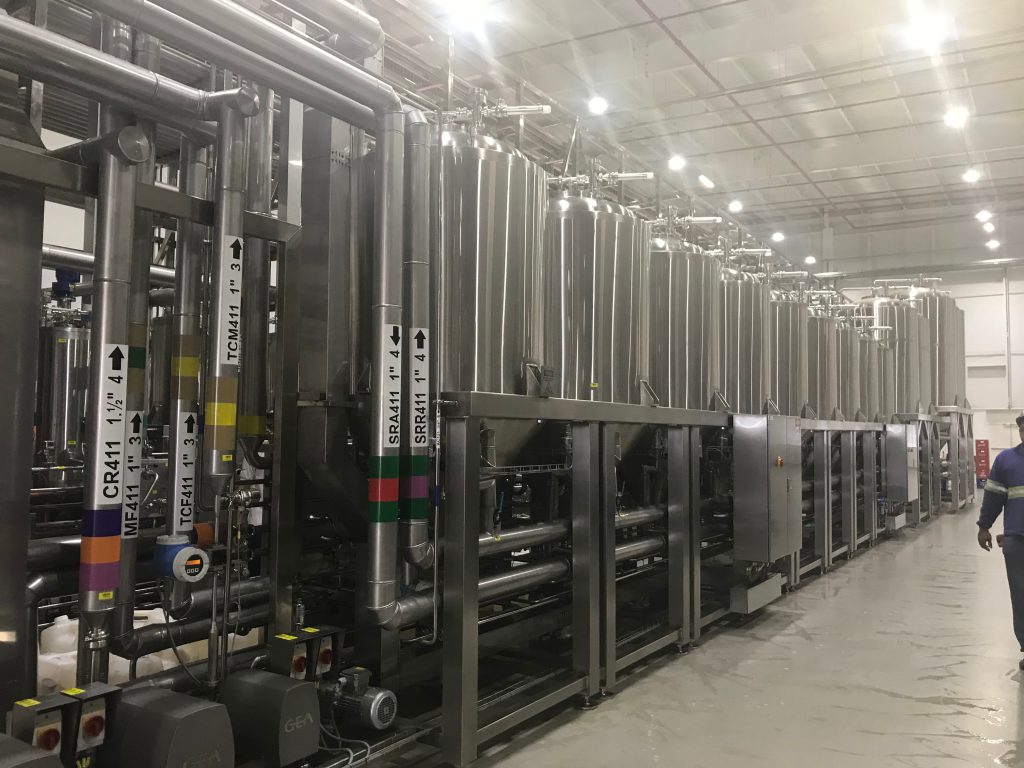Introduction

In industrial settings, efficient management of steam condensate is critical for both energy conservation and process optimization. Steam condensate coolers play a vital role in this aspect by effectively cooling and recovering heat from hot condensate streams. This article delves into the various advantages offered by steam condensate coolers and their significance in industrial applications.
Understanding Steam Condensate Coolers
Before exploring their advantages, let’s first understand what steam condensate coolers are and how they function. Steam condensate coolers are heat exchangers designed to cool down hot condensate streams generated from steam-based processes. By utilizing a cooling medium, such as water or air, these coolers efficiently remove heat from the condensate, allowing for its reuse or safe disposal.
Energy Efficiency
One of the primary advantages of steam condensate coolers is their contribution to energy efficiency. By recovering heat from hot condensate streams, these coolers reduce the energy consumption of processes that rely on steam. This not only lowers operational costs but also minimizes greenhouse gas emissions, aligning with sustainability goals.
Cost Savings
Implementing steam condensate coolers can lead to significant cost savings for industrial facilities. By reusing heat energy from condensate streams, companies can reduce their reliance on external energy sources, resulting in lower utility bills. Additionally, the recovered heat can be utilized for preheating boiler feedwater or other process streams, further enhancing cost-effectiveness.
Enhanced Process Performance
The use of steam coolers can improve overall process performance and reliability. By maintaining optimal condensate temperatures, these coolers prevent issues such as steam hammer, water hammer, and corrosion in the condensate return system. This ensures smoother operation and prolongs the lifespan of equipment, reducing downtime and maintenance costs.
Environmental Benefits
In addition to cost savings and process improvements, steam condensate coolers offer environmental benefits. By conserving energy and reducing the demand for fossil fuels, these coolers help mitigate environmental impact and combat climate change. Furthermore, the reuse of condensate minimizes water consumption and wastewater generation, promoting sustainable resource management.
Application Flexibility
Steam condensate coolers are versatile devices that can be tailored to suit various industrial applications. Whether it’s a small-scale process or a large-scale industrial facility, these coolers can be customized to meet specific requirements. They are compatible with different types of steam systems and can operate efficiently under varying operating conditions.
Maintenance Considerations
While steam condensate coolers offer numerous advantages, proper maintenance is essential to ensure optimal performance and longevity. Regular inspection, cleaning, and preventive maintenance measures are necessary to prevent fouling, scaling, and corrosion, which can impair heat transfer efficiency. By adhering to a proactive maintenance regimen, companies can maximize the lifespan of their condensate coolers and minimize downtime.
Application Areas of Steam Condensate Coolers

This table provides a glimpse into the diverse application areas of steam condensate coolers across various industries. From petrochemical plants to food processing facilities, these coolers find utility in a wide range of processes for heat recovery and energy conservation.
| Industry Sector | Application |
|---|---|
| Petrochemical | Condensate recovery for steam cracking processes |
| Food Processing | Cooling hot condensate from steam pasteurization |
| Power Generation | Preheating boiler feedwater with recovered condensate |
| Pharmaceuticals | Condensate cooling in sterile processing applications |
| Textile Manufacturing | Heat recovery from dyeing and finishing processes |
| Pulp and Paper | Condensate cooling in paper drying machines |
| Chemical Processing | Cooling condensate from chemical reaction vessels |
| HVAC Systems | Recovering heat from condensate in air conditioning |
| Refineries | Condensate cooling in distillation towers |
| Metal Fabrication | Heat recovery from steam cleaning operations |
Conclusion
In conclusion, steam condensate coolers play a pivotal role in enhancing energy efficiency, reducing costs, and improving process performance in industrial settings. By efficiently cooling hot condensate streams and recovering heat energy, these devices offer a sustainable solution for steam system optimization. With proper maintenance and careful consideration of application requirements, companies can harness the full potential of steam condensate coolers to drive operational excellence and environmental stewardship.
FAQ
Q:What distinguishes steam condensate coolers from conventional heat exchangers?
A:Steam condensate coolers are specifically designed to cool hot condensate streams generated from steam-based processes, whereas conventional heat exchangers may be used for various heating or cooling applications.
Q:Can steam coolers be integrated into existing steam systems?
A:Yes, steam coolers can be seamlessly integrated into existing steam systems with minimal modifications. They are adaptable to different configurations and can be customized to fit specific space and performance requirements.
Q:How do steam condensate coolers contribute to sustainability efforts?
A:Steam condensate coolers promote sustainability by conserving energy and reducing greenhouse gas emissions. By recovering heat from condensate streams, they minimize the need for additional energy inputs, thereby lowering carbon footprints and enhancing environmental stewardship.
Q:What maintenance practices are recommended for steam condensate coolers?
A:Regular inspection, cleaning, and preventive maintenance are essential for steam condensate coolers to ensure optimal performance and longevity. This includes monitoring for fouling, scaling, and corrosion, as well as addressing any leaks or mechanical issues promptly.
Q:Are there any regulatory considerations associated with steam condensate cooling systems?
A:Depending on the industry and location, there may be regulatory requirements governing the operation and maintenance of steam condensate cooling systems. It’s important for companies to stay informed about relevant regulations and ensure compliance to avoid penalties and ensure safety.

